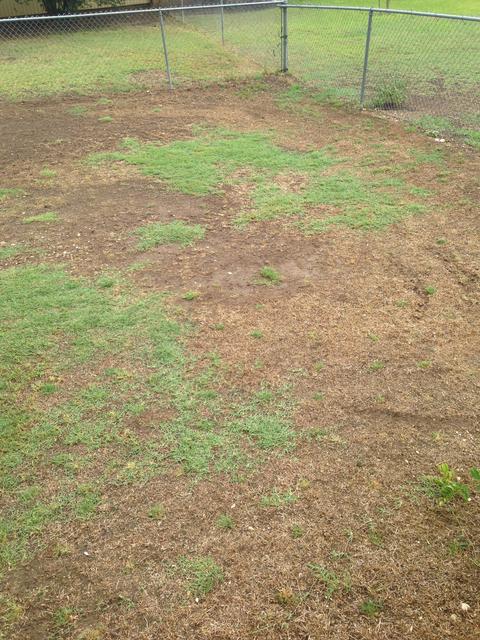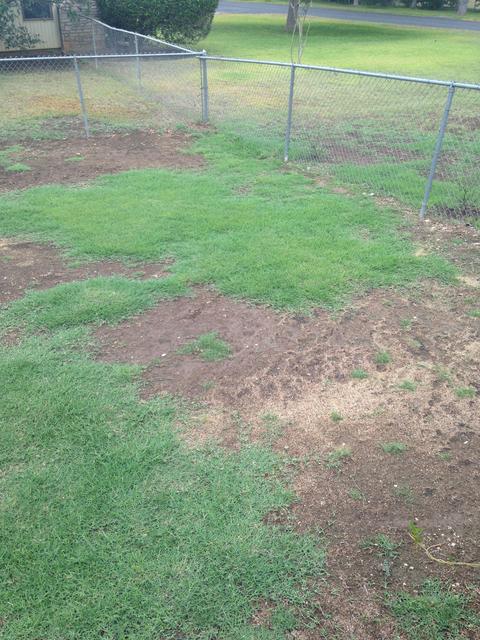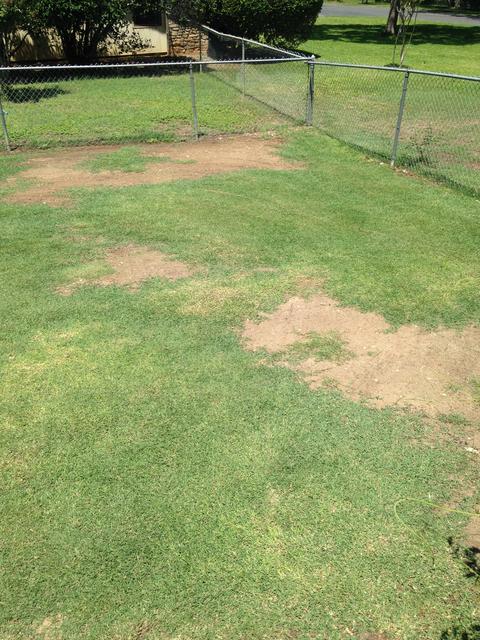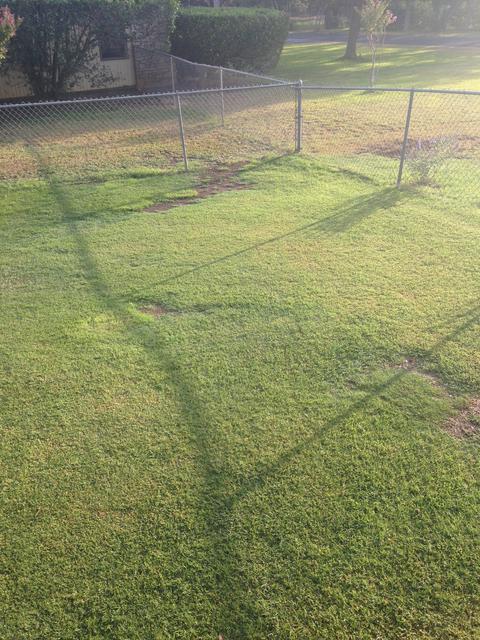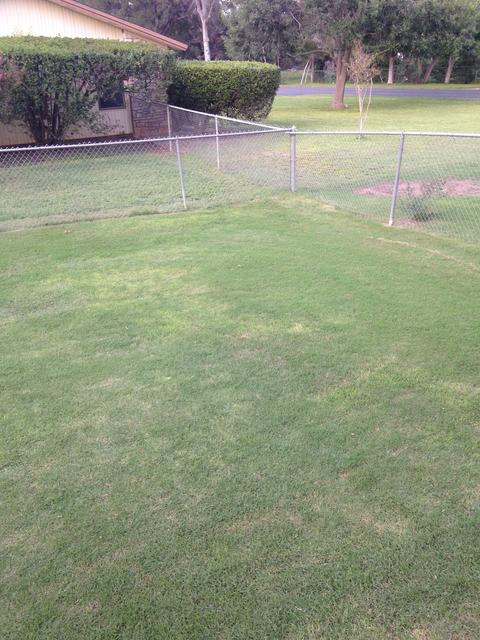How far can hybrid varieties crawl in one growing season from an established source? 10 feet? I can't find any studies documenting the rate of lateral spread. Let me know if there are any or you have first-hand experience from your fill-in.

cglarsen
Bermuda Lateral Growth Rate
cglarsen
Discussion starter
931 posts
·
Joined 2018
- Add to quote Only show this user
How far can hybrid varieties crawl in one growing season from an established source? 10 feet? I can't find any studies documenting the rate of lateral spread. Let me know if there are any or you have first-hand experience from your fill-in.
391 posts
·
Joined 2019
This spring / summer I built a garage. The wood package included 16 foot long pieces. So I had a section 4 foot by 16 foot completely covered from the sun for several months. By the end of July I finished getting through all that wood. The Bermuda underneath had been completely killed.
I used 12-12-12 fertilizer in Aug and Sep at probably a .5 lb / M rate. I did not irrigate and that section sits on the north side, under a limbed up oak tree. It probably gets 5 hours of direct sunlight.
Instead of growing in from all sides of the bare spot the Bermuda started its growth from the side that received the most sunlight and then creeped towards the oak tree.
I'd say it grew about 6 feet from August to mid October.
Not sure if that's what you were asking but below are some photos for visual.
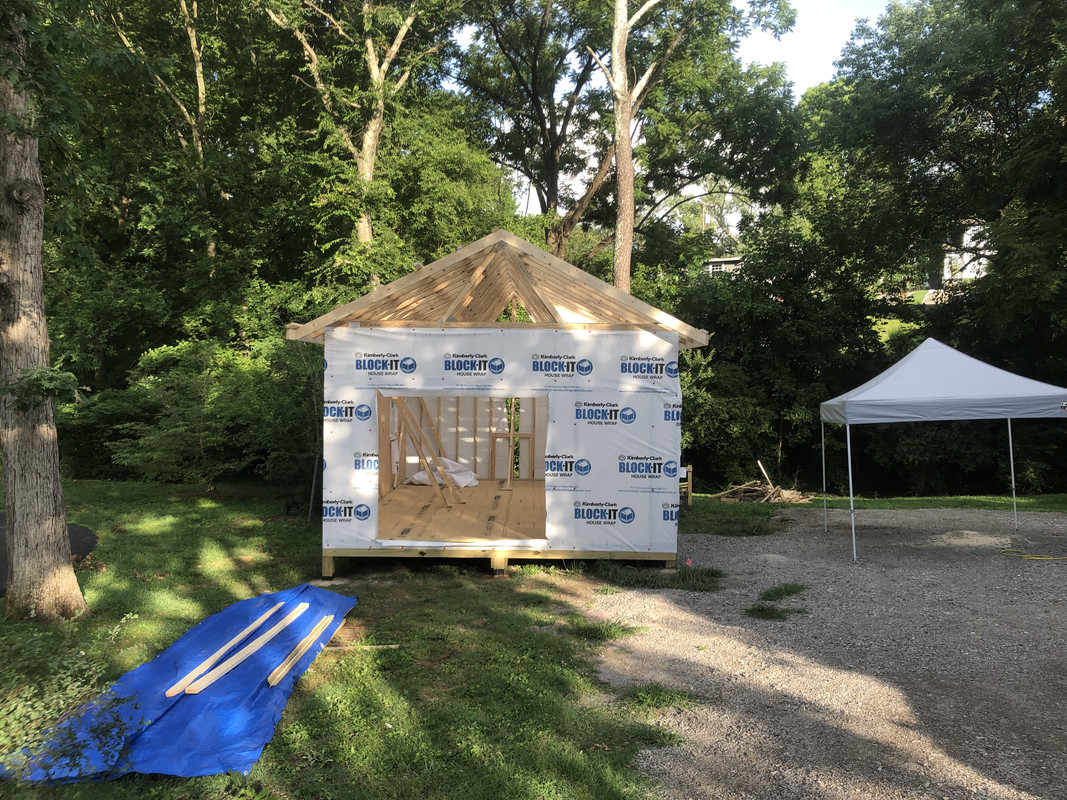
You can kind of make out where the wood was sitting. Taken September 22nd. It probably grew another 9-12 inches through mid October when growth stopped.
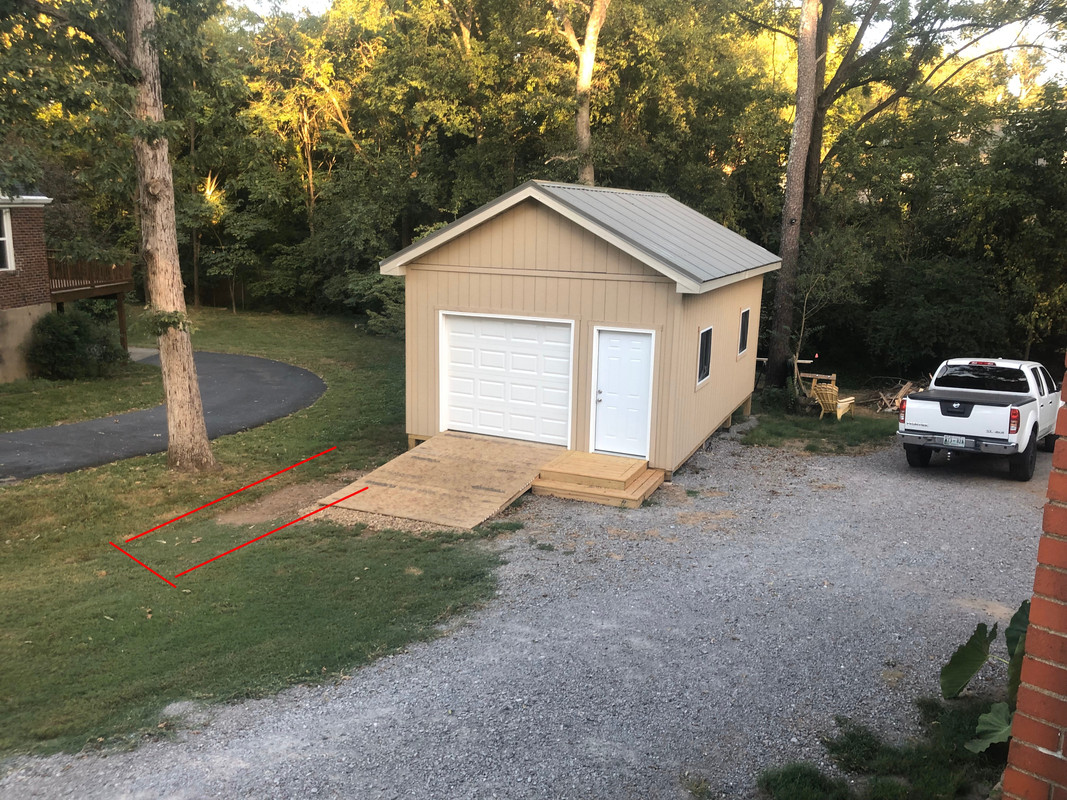
I used 12-12-12 fertilizer in Aug and Sep at probably a .5 lb / M rate. I did not irrigate and that section sits on the north side, under a limbed up oak tree. It probably gets 5 hours of direct sunlight.
Instead of growing in from all sides of the bare spot the Bermuda started its growth from the side that received the most sunlight and then creeped towards the oak tree.
I'd say it grew about 6 feet from August to mid October.
Not sure if that's what you were asking but below are some photos for visual.

You can kind of make out where the wood was sitting. Taken September 22nd. It probably grew another 9-12 inches through mid October when growth stopped.

835 posts
·
Joined 2017
Not sure how far a single sprig would run, but if it helps here is my progress with sprigs from Aug 2 (maybe a week or so after spreading the sprigs) to October 15. For perspective, the area being grown in here is approximately 2,000 sq ft.
Aug 2:
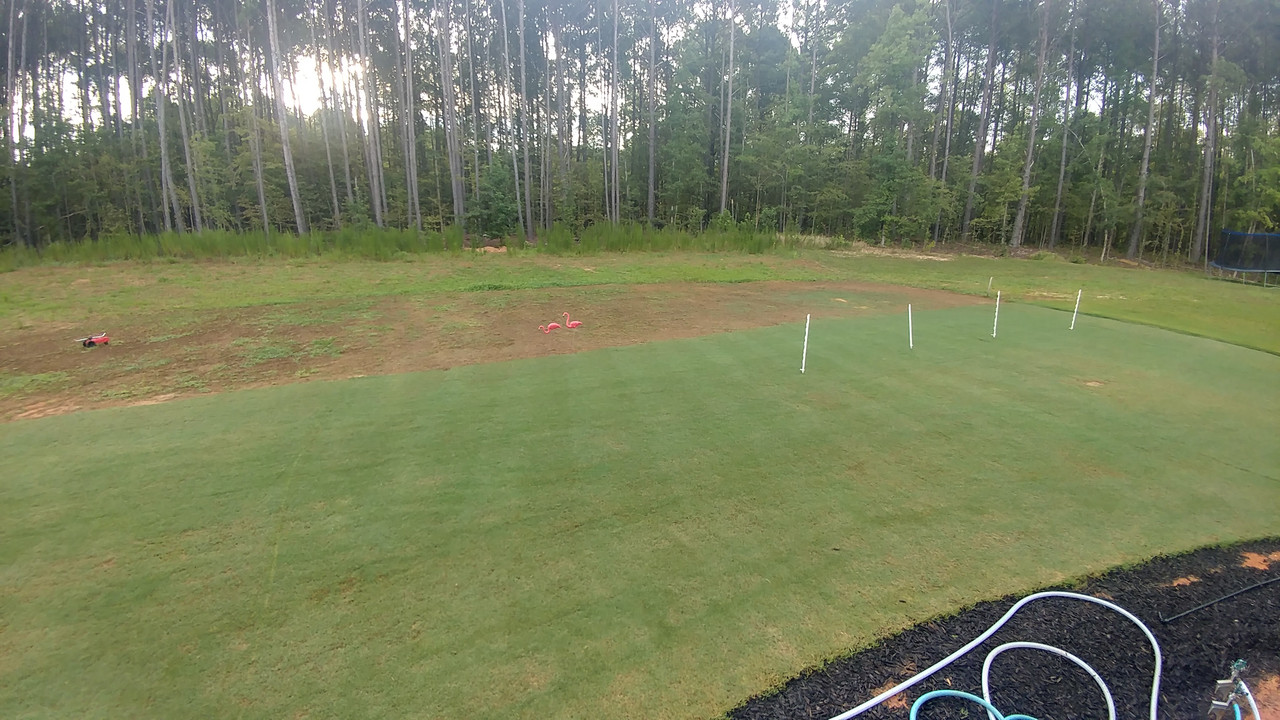
Here's a closeup how far they had spread as of August 20:
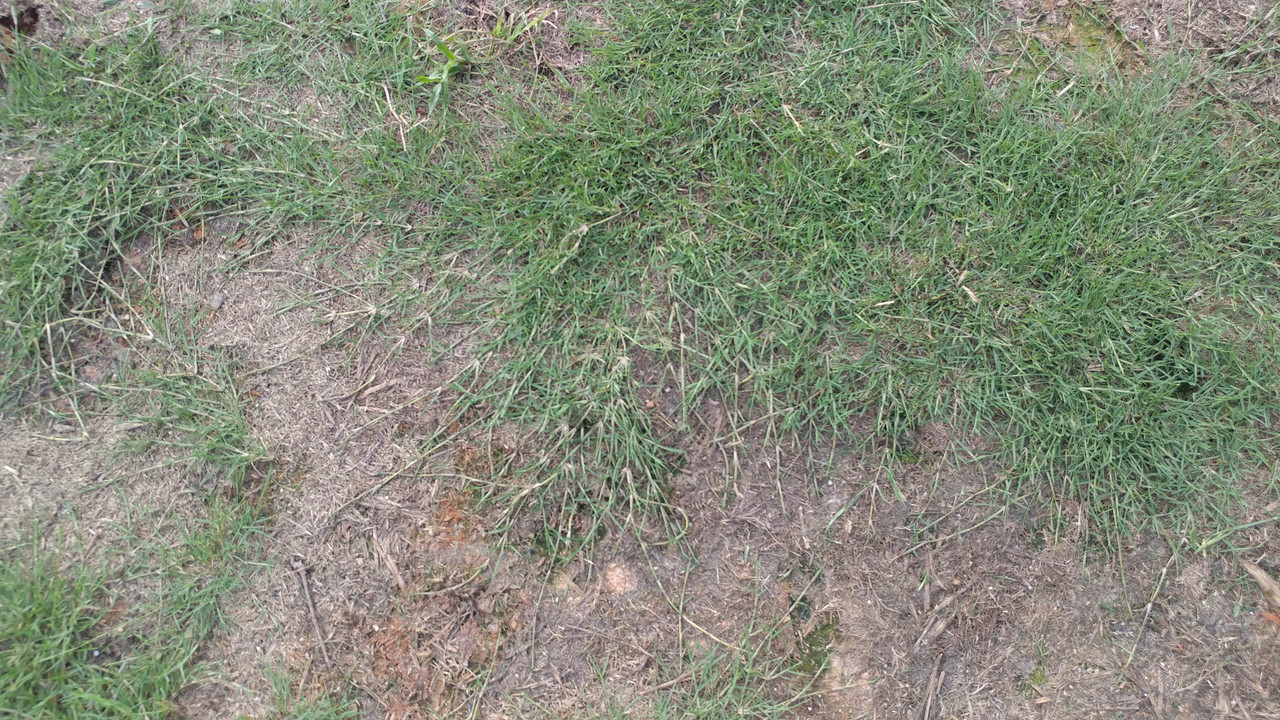
Oct 15:
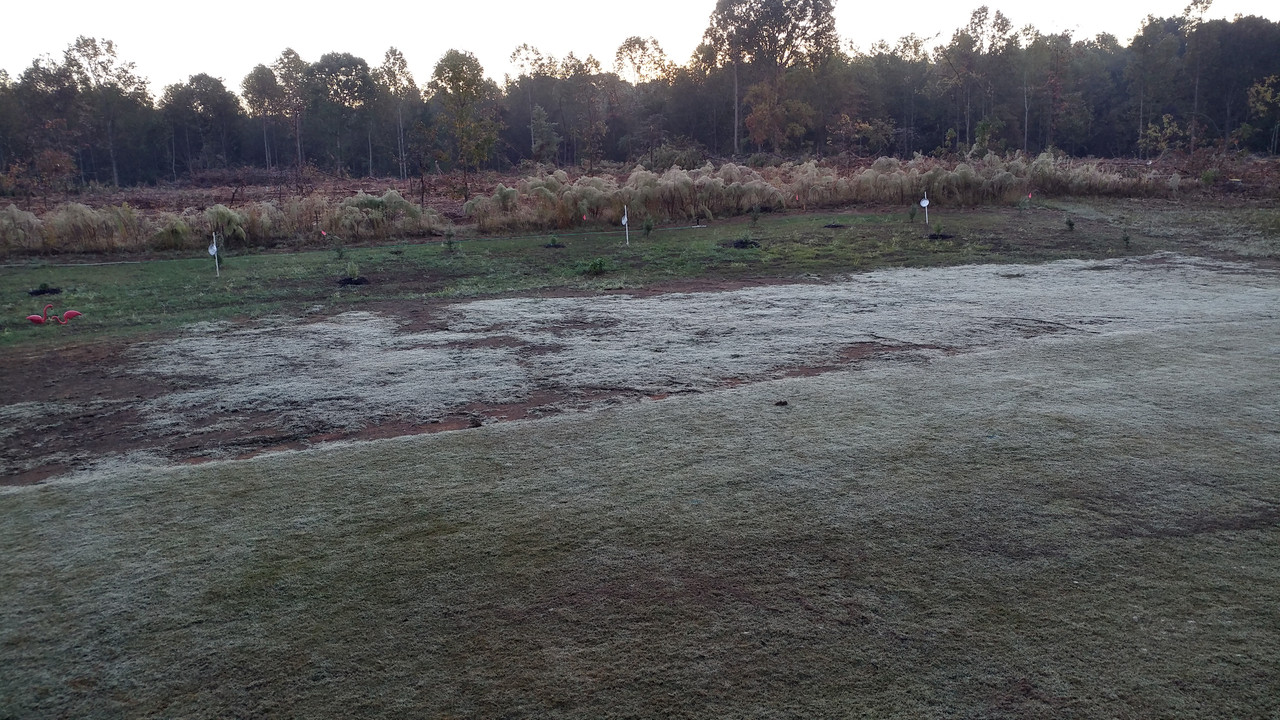
Aug 2:

Here's a closeup how far they had spread as of August 20:

Oct 15:

cglarsen
Discussion starter
931 posts
·
Joined 2018
@Easyluck @adgattoni Thanks for that.
Basically what I'm dealing with is a drainge ditch that I laid a line of sod as a filter strip on the shoulder of the slope and everything above it is bermuda (of some variety). Below/towards road is still weeds and cool season mix for cover. I'm wondering how far I can expect the TifTuf to crawl down the slope next growing season. It's a difficult area to seed or sprig due to high risk of washout and shade is a factor. Here's the area about when sodded in June and about a month ago to show the line of demarcation.
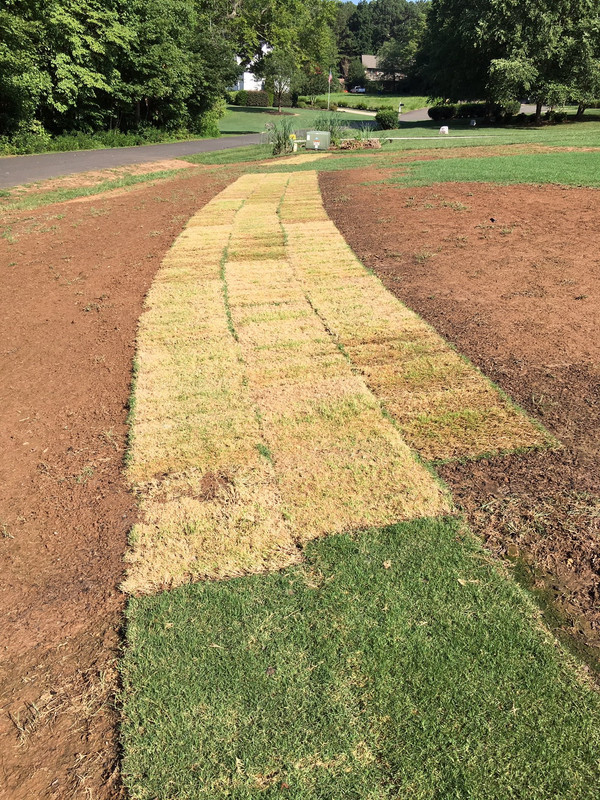
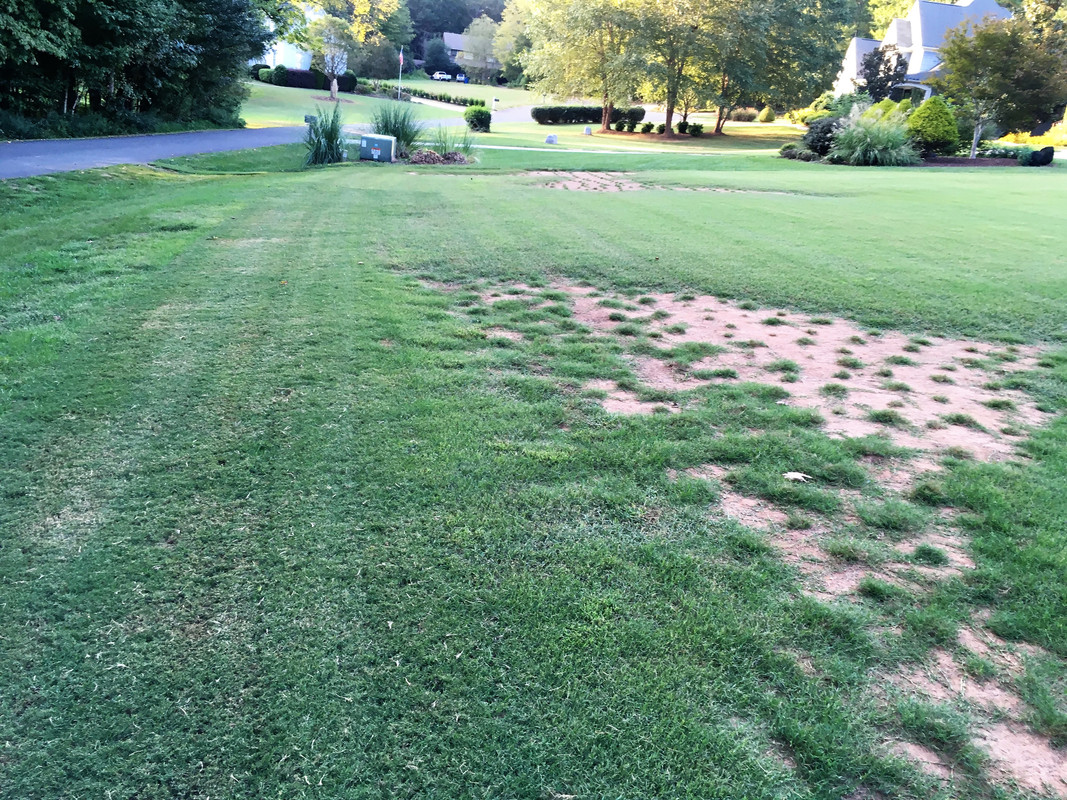
Basically what I'm dealing with is a drainge ditch that I laid a line of sod as a filter strip on the shoulder of the slope and everything above it is bermuda (of some variety). Below/towards road is still weeds and cool season mix for cover. I'm wondering how far I can expect the TifTuf to crawl down the slope next growing season. It's a difficult area to seed or sprig due to high risk of washout and shade is a factor. Here's the area about when sodded in June and about a month ago to show the line of demarcation.


220 posts
·
Joined 2019
When I sprigged my lawn (8k sq ft), it was early summer and it took about 6 weeks for the lawn to cover, e.g. no worries about rain washing away the soil. In a few weeks you couldn't tell it had been sprigged, although the lack of inevitable gaps in the sod was a hint it was not sodded. If you put down a standard piece of sod as opposed to sprigs, it wouldn't spread as fast. If this is a concern, cut up some of your sod and make your own sprigs (when night temps are 60+ F).
28 posts
·
Joined 2019
This might not be totally analogous to your situation, but my local golf course just did a complete renovation of the fairways. They sprayed glyphosate and killed the existing grass in April, sprigged TifTuf in late May, and by 1 September they were back open for golf operations. The grass has filled in amazingly even if they're still dealing with a few thin spots.
20 posts
·
Joined 2017
the speed of spreading would totally depend on the variety of the bermuda. I had a common bremuda growing almost 5-7 inches in a week depending on water on fertilizer. now I have tifgrand which is very very slow to spread.
88 posts
·
Joined 2018
cglarsen
Discussion starter
931 posts
·
Joined 2018
@FranksATX I've seen these photos before I believe. Nicely done.
Whats the farthest that one single edge moved over that summer - 10 feet?
Whats the farthest that one single edge moved over that summer - 10 feet?
88 posts
·
Joined 2018
Its hard to say how far a single edge moved, but 10 feet would be close. I would think it depends on the area that the grass is going to move into. Is there anything there now? If there is some common bermuda there now it will out compete the hybrid for the bare ground.
If you can do it, sprigging is by far the best method of establishing bermuda grass short of sod. I have tried seeding, plugging, sprigging, and agricultural(maintaining the grass how it likes to out compete the less desirable grass). Spriggs cover the largest area in the shortest amount of time with the least amount of headaches.
If you can do it, sprigging is by far the best method of establishing bermuda grass short of sod. I have tried seeding, plugging, sprigging, and agricultural(maintaining the grass how it likes to out compete the less desirable grass). Spriggs cover the largest area in the shortest amount of time with the least amount of headaches.
2,272 posts
·
Joined 2018
I agree that common Bermuda is a beast at spreading. Our first winter at this house we had a lot of green through the winter. With the aid of Celsius and mowing lower we had all beautiful dormant common Bermuda in one season. Other than wild onion in a few spots the entire lawn is a gorgeous brown carpet now.FranksATX said:Its hard to say how far a single edge moved, but 10 feet would be close. I would think it depends on the area that the grass is going to move into. Is there anything there now? If there is some common bermuda there now it will out compete the hybrid for the bare ground.
If you can do it, sprigging is by far the best method of establishing bermuda grass short of sod. I have tried seeding, plugging, sprigging, and agricultural(maintaining the grass how it likes to out compete the less desirable grass). Spriggs cover the largest area in the shortest amount of time with the least amount of headaches.
295 posts
·
Joined 2017
@FranksATX that encouraging to see those pics. Did those spots have any type of preemergent applied to it? I've had trouble getting my Bermuda to fill in bare spots over the last 2 seasons. This year I am going to skip the pre-m and feed feed feed.
88 posts
·
Joined 2018
No preM. That ground was full of weeds when I started. That is what was left after 1 heavy application of Celsius.
606 posts
·
Joined 2018
If you over apply pre emergent it will cause the new runners not to stick and keep dying, I overdid it with the pre emergent and pretty much prevented most weeds, but some areas where i killed old weeds didn't fill in all the way. This upcoming year I will be super light with the pre emergent.M311att said:@FranksATX that encouraging to see those pics. Did those spots have any type of preemergent applied to it? I've had trouble getting my Bermuda to fill in bare spots over the last 2 seasons. This year I am going to skip the pre-m and feed feed feed.
2,272 posts
·
Joined 2018
I have two fairly large bare spots that I need to fill in next season. I'm not going to apply any pre-em to those areas after seeing them struggle this year. I'll tackle whatever weeds come up post but don't want to risk another season of bare dirt.erdons said:If you over apply pre emergent it will cause the new runners not to stick and keep dying, I overdid it with the pre emergent and pretty much prevented most weeds, but some areas where i killed old weeds didn't fill in all the way. This upcoming year I will be super light with the pre emergent.M311att said:@FranksATX that encouraging to see those pics. Did those spots have any type of preemergent applied to it? I've had trouble getting my Bermuda to fill in bare spots over the last 2 seasons. This year I am going to skip the pre-m and feed feed feed.
cglarsen
Discussion starter
931 posts
·
Joined 2018
The area has PRG there for cover right now but will be thinning out once the heat comes back. Sprigging will be difficult due to the slope and washout the area gets. I might try it but will be focusing on renovating the backyard this coming season.FranksATX said:Its hard to say how far a single edge moved, but 10 feet would be close. I would think it depends on the area that the grass is going to move into. Is there anything there now? If there is some common bermuda there now it will out compete the hybrid for the bare ground.
If you can do it, sprigging is by far the best method of establishing bermuda grass short of sod. I have tried seeding, plugging, sprigging, and agricultural(maintaining the grass how it likes to out compete the less desirable grass). Spriggs cover the largest area in the shortest amount of time with the least amount of headaches.
If I could get 10 feet of movement per year I'd have the ditch covered in 3 years and could live with that.
cglarsen
Discussion starter
931 posts
·
Joined 2018
I'm going to try oxadiazon this year instead of prodiamine on my sod farm.erdons said:If you over apply pre emergent it will cause the new runners not to stick and keep dying, I overdid it with the pre emergent and pretty much prevented most weeds, but some areas where i killed old weeds didn't fill in all the way. This upcoming year I will be super light with the pre emergent.M311att said:@FranksATX that encouraging to see those pics. Did those spots have any type of preemergent applied to it? I've had trouble getting my Bermuda to fill in bare spots over the last 2 seasons. This year I am going to skip the pre-m and feed feed feed.
88 posts
·
Joined 2018
If it is bare ground sprigging is not too difficult as long as there is adequate irrigation and sunlight. The free way is to pull some long runners from a inconspicuous place, rake the soil to loosen it, and plant the runners into the area. I have done this and had some success with less than perfect conditions.
Taking the long approach is the right way to think about it. I would bet if you pushed the established edge into the area, and did some supplemental sprigging you could have mostly covered in a season, and a good stand in two.
Take plenty of pics and let us know how it goes!
Taking the long approach is the right way to think about it. I would bet if you pushed the established edge into the area, and did some supplemental sprigging you could have mostly covered in a season, and a good stand in two.
Take plenty of pics and let us know how it goes!
3,343 posts
·
Joined 2017
Solid plan. Simazine is also sprigging friendly.cglarsen said:I'm going to try oxadiazon this year instead of prodiamine on my sod farm.erdons said:If you over apply pre emergent it will cause the new runners not to stick and keep dying, I overdid it with the pre emergent and pretty much prevented most weeds, but some areas where i killed old weeds didn't fill in all the way. This upcoming year I will be super light with the pre emergent.M311att said:@FranksATX that encouraging to see those pics. Did those spots have any type of preemergent applied to it? I've had trouble getting my Bermuda to fill in bare spots over the last 2 seasons. This year I am going to skip the pre-m and feed feed feed.
2,272 posts
·
Joined 2018
@cglarsen if you decide to try simazine let me know. I have a bunch I will gladly share with you.Movingshrub said:Solid plan. Simazine is also sprigging friendly.cglarsen said:I'm going to try oxadiazon this year instead of prodiamine on my sod farm.erdons said:If you over apply pre emergent it will cause the new runners not to stick and keep dying, I overdid it with the pre emergent and pretty much prevented most weeds, but some areas where i killed old weeds didn't fill in all the way. This upcoming year I will be super light with the pre emergent.
3,343 posts
·
Joined 2017
Oxadiazon is the gold standard in my opinion. Simazine is applied about two weeks, after sprigging, and doesn't last as long. However, it is cheap and labeled for residential application.
cglarsen
Discussion starter
931 posts
·
Joined 2018
Thanks, I bought a big jug of it last year. Looks like I'll be using this as well.TN Hawkeye said:@cglarsen if you decide to try simazine let me know. I have a bunch I will gladly share with you.Movingshrub said:Solid plan. Simazine is also sprigging friendly.cglarsen said:I'm going to try oxadiazon this year instead of prodiamine on my sod farm.
-
?
-
?
-
?
-
?
-
?
-
?
-
?
-
?
-
?
-
?
-
?
-
?
-
?
-
?
-
?
-
?
-
?
-
?
-
?
-
?
- posts
- 664K
- members
- 43K
- Since
- 2017
A forum community dedicated to lawn care, landscaping do it yourselfers, and enthusiasts. Come join the discussion to learn about industry equipment, tools, lawn care, lawn maintenance, classifieds, troubleshooting, and more!

